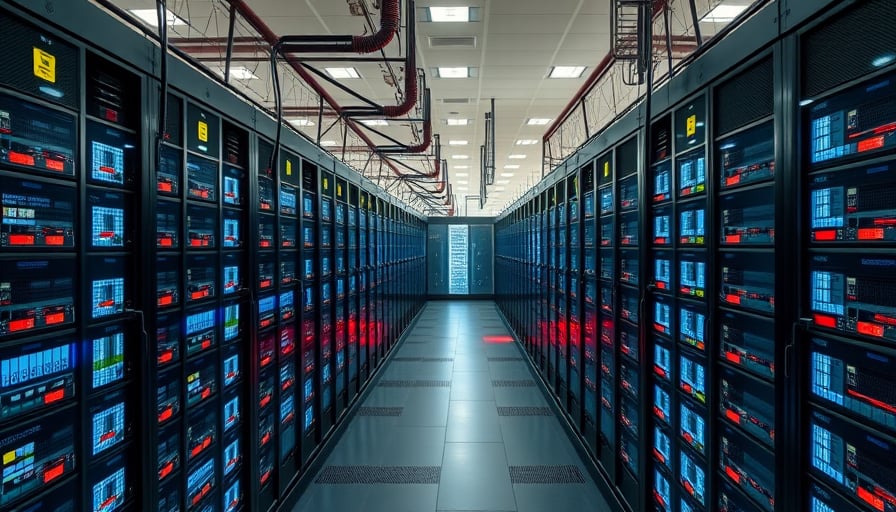Corporate News Analysis: Cheniere Energy Inc. and Its Implications for the LNG Market
Market Context and Supply‑Demand Fundamentals
Cheniere Energy Inc., the world’s largest liquefied natural gas (LNG) exporter, has recently disclosed that its operating costs for transporting LNG have risen. This development follows a sustained uptick in global LNG demand, driven primarily by European utilities seeking to diversify away from coal and to meet climate‑targeted decarbonization mandates. The upward pressure on freight costs reflects a supply‑demand imbalance: while existing shipping capacity remains largely fixed, the volume of LNG in transit has surged, pushing freight rates higher and squeezing margins for shippers.
From a broader energy perspective, natural gas continues to occupy a pivotal position as a transitional fuel. Demand is expected to grow in the United States and in Asia, where LNG imports are projected to rise 8–10 % annually through 2030. Conversely, the European market’s focus on electrification and hydrogen production is gradually curtailing LNG imports, creating a regional supply‑demand shift that will influence pricing dynamics worldwide.
Technological Innovations in Production and Storage
Cheniere’s cost escalation is partially attributable to the need for more advanced cryogenic handling and storage technologies. The company has recently invested in high‑capacity, low‑loss cryogenic tanks and in next‑generation LNG regasification terminals that incorporate digital twins and AI‑driven predictive maintenance. These upgrades aim to reduce boil‑off rates and improve overall efficiency, thereby mitigating the cost impact of higher freight charges over the long term.
In parallel, the broader LNG sector is embracing renewable gas pathways, such as green hydrogen and blue LNG, which rely on carbon capture and storage (CCS) technologies. While these innovations remain in the pilot stage, they are reshaping the competitive landscape by offering lower‑carbon alternatives that could erode the traditional LNG value proposition if regulatory incentives accelerate.
Regulatory Impact on Traditional and Renewable Energy Sectors
The recent S&P Global Ratings upgrade of Cheniere’s partner rating to BBB+ underscores a stable credit outlook for its affiliated entities. This rating enhancement reflects confidence in Cheniere’s financial resilience and its ability to weather regulatory shifts, including potential carbon pricing mechanisms and stricter emissions standards. A BBB+ rating also signals to investors that Cheniere can secure favorable debt terms, which is crucial for financing capital‑intensive projects such as LNG export terminals and CCS installations.
At the policy level, the U.S. Inflation Reduction Act and the European Green Deal are creating a mixed regulatory environment. While subsidies for renewable infrastructure and hydrogen production are expanding, there remain incentives for gas infrastructure to meet short‑term climate goals. This duality means that companies like Cheniere must balance immediate financial performance against long‑term strategic positioning in a transitioning energy market.
Commodity Price Analysis and Production Data
- LNG Prices: Spot LNG prices in the U.S. Henry Hub region averaged USD 1.24 /MMBtu in Q1 2025, up 12 % from the same period last year. European prices remain above USD 1.80 /MMBtu due to scarcity and higher shipping costs.
- Natural Gas Spot Prices: U.S. natural gas spot prices have recovered from the 2023 lows, averaging USD 4.10 /MMBtu in Q1 2025, reflecting tighter supply after the Winter 2024–25 peak demand.
- Production Trends: Cheniere’s LNG exports grew by 6 % YoY, reaching 9.8 billion cubic meters, while total LNG production in the U.S. increased by 4 % to 200 billion cubic meters. The company’s pipeline capacity expansion, completed in 2024, has added 1.3 billion cubic meters per annum to its export capability.
These data points illustrate a sector in which supply has not yet caught up with demand, thereby sustaining premium freight rates and supporting the higher operating costs reported by Cheniere.
Infrastructure Developments and Market Dynamics
Cheniere’s flagship LNG export terminal in Sabine Pass has recently undergone a 1.5 billion cubic meters per annum expansion, enabling the company to meet growing European orders without reliance on third‑party shipping. Additionally, the company has secured a long‑term lease for a new regasification facility in Rotterdam, positioning it to capture the post‑pandemic surge in European LNG consumption.
Infrastructure upgrades are key to maintaining market competitiveness, especially as new entrants with renewable gas technologies seek to capitalize on the growing green‑fuel demand. Cheniere’s investment in digital infrastructure—real‑time monitoring, automated control systems, and data analytics—aims to improve throughput efficiency, reduce downtime, and lower operating costs, thereby offsetting the short‑term cost pressures identified in the company’s latest financial reporting.
Balancing Short‑Term Trading Factors with Long‑Term Energy Transition Trends
Short‑term market drivers—such as freight rate volatility, spot price swings, and seasonal demand peaks—continue to influence Cheniere’s operating profitability. However, the company’s strategic focus on technology upgrades and infrastructure expansion signals a broader commitment to adapt to the long‑term trajectory of the global energy transition.
Key takeaways for market participants include:
- Cost Management: While operating costs are rising, Cheniere’s investments in efficiency technologies are likely to moderate these increases over the next 3–5 years.
- Credit Stability: The BBB+ rating upgrade provides a buffer against potential liquidity challenges, facilitating access to capital for further expansion or technology integration.
- Regulatory Resilience: The company’s diversified portfolio of projects and its alignment with carbon‑reduction incentives position it to navigate both traditional and emerging renewable energy markets.
- Commodity Outlook: Continued demand growth for LNG, especially in Europe, supports price stability, while domestic gas price dynamics may introduce volatility that can affect operational margins.
In conclusion, Cheniere Energy’s recent operational cost update and credit rating improvement reflect a company that is both responsive to current market pressures and proactive in preparing for a future where renewable alternatives and carbon‑management technologies will play increasingly prominent roles. Market participants should monitor freight rate developments, regulatory announcements, and the company’s ongoing technological investments to assess long‑term value creation.




